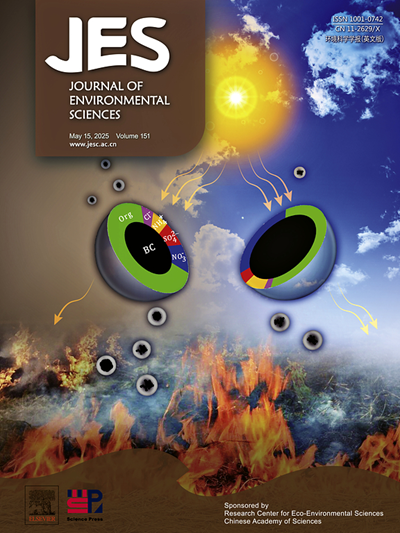Metals and polycyclic aromatic hydrocarbons co-exposure: Amino acid omics insights on blood glucose homeostasis
IF 5.9
2区 环境科学与生态学
Q1 ENVIRONMENTAL SCIENCES
引用次数: 0
Abstract
Previous studies have reported a relationship between exposure to metals and polycyclic aromatic hydrocarbons (PAHs) and blood glucose levels, but whether the mechanisms are mediated by amino acids remains to be elucidated. We conducted a three-wave repeated measurement study involving 201 elderly individuals (aged ≥ 50 years) from five communities in Beijing, China. We simultaneously measured eight metals in both blood and urine, six monohydroxy PAHs in urine, and 23 amino acids in blood. Linear mixed-effects and sparse partial least squares models were used to evaluate the individual effects, and Bayesian kernel machine regression was employed to mixture effects. Mediation analysis was further used to explore whether amino acids mediators mediate the association. We observed significant associations of selenium and strontium with increased blood glucose. Additionally, blood copper, urinary nickel, as well as urinary 1 + 9 hydroxyphenanthrene, were associated with irregular blood glucose regulation. Moreover, we found that amino acids such as leucine, proline, and alanine may mediate the associations. This study is the first to investigate the effect of metals and PAHs on blood glucose homeostasis, while also exploring the mediating role of amino acids, offering new insights into the impact of metals and PAHs on blood glucose regulation.

金属和多环芳烃共暴露:氨基酸组学对血糖稳态的影响
先前的研究已经报道了暴露于金属和多环芳烃(PAHs)与血糖水平之间的关系,但其机制是否由氨基酸介导仍有待阐明。我们对来自中国北京5个社区的201名老年人(年龄≥50岁)进行了三波重复测量研究。我们同时测量了血液和尿液中的8种金属,尿液中的6种单羟基多环芳烃,血液中的23种氨基酸。个体效应评价采用线性混合效应和稀疏偏最小二乘模型,混合效应评价采用贝叶斯核机回归。我们进一步利用中介分析来探究氨基酸是否介导了这种关联。我们观察到硒和锶与血糖升高的显著关联。此外,血铜、尿镍以及尿1 + 9羟基菲与血糖调节不规律有关。此外,我们还发现亮氨酸、脯氨酸和丙氨酸等氨基酸可能介导这种关联。本研究首次探讨了金属和多环芳烃对血糖稳态的影响,同时也探索了氨基酸的介导作用,为金属和多环芳烃对血糖调节的影响提供了新的见解。
本文章由计算机程序翻译,如有差异,请以英文原文为准。
求助全文
约1分钟内获得全文
求助全文
来源期刊

Journal of Environmental Sciences-china
环境科学-环境科学
CiteScore
13.70
自引率
0.00%
发文量
6354
审稿时长
2.6 months
期刊介绍:
The Journal of Environmental Sciences is an international journal started in 1989. The journal is devoted to publish original, peer-reviewed research papers on main aspects of environmental sciences, such as environmental chemistry, environmental biology, ecology, geosciences and environmental physics. Appropriate subjects include basic and applied research on atmospheric, terrestrial and aquatic environments, pollution control and abatement technology, conservation of natural resources, environmental health and toxicology. Announcements of international environmental science meetings and other recent information are also included.
 求助内容:
求助内容: 应助结果提醒方式:
应助结果提醒方式:


